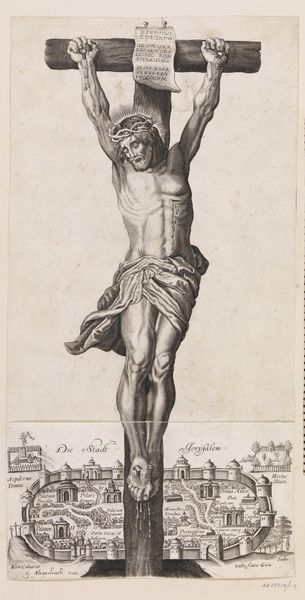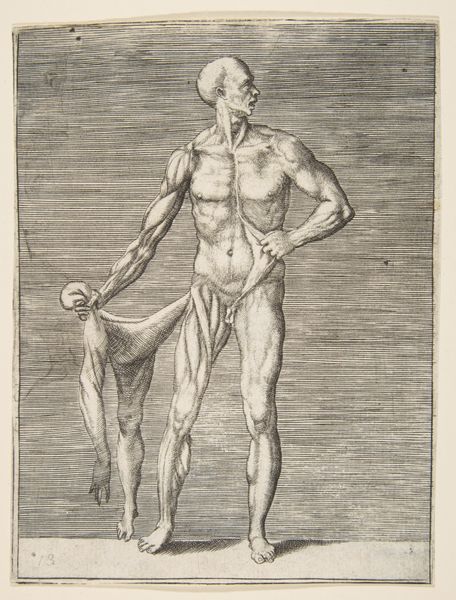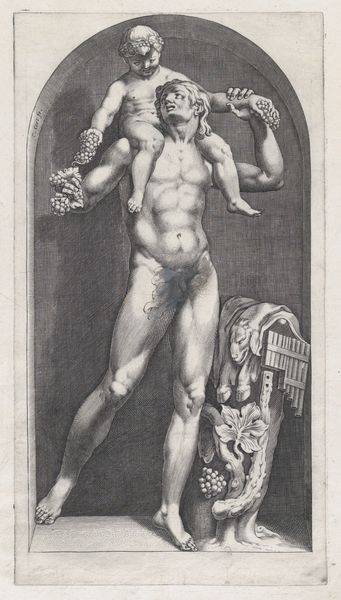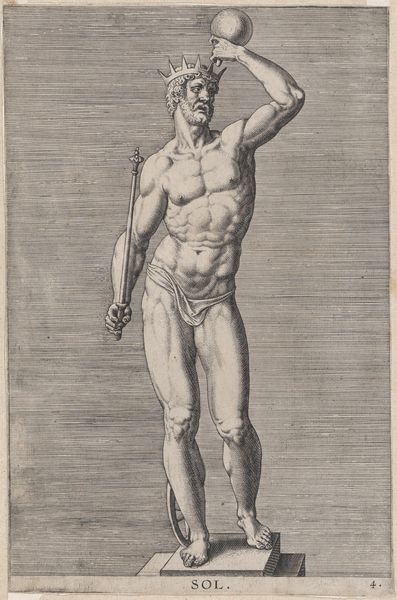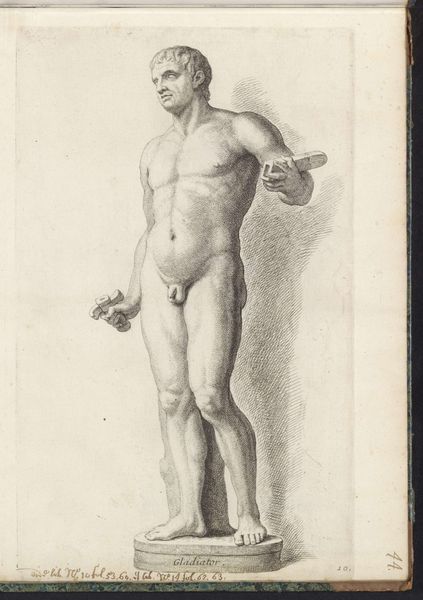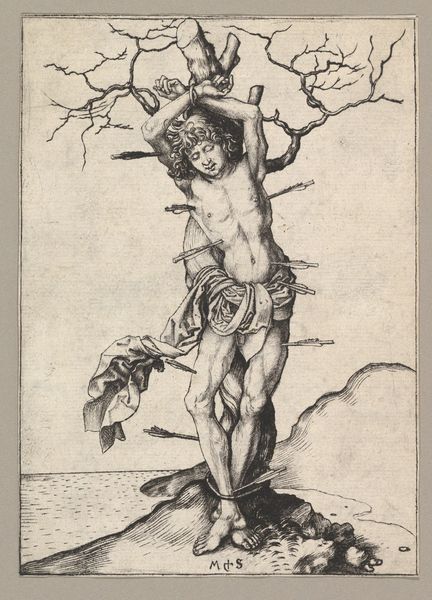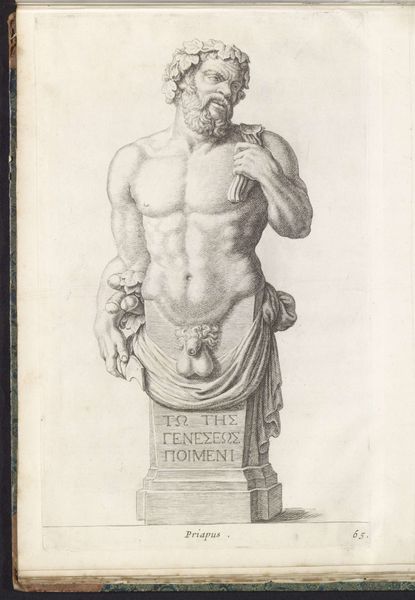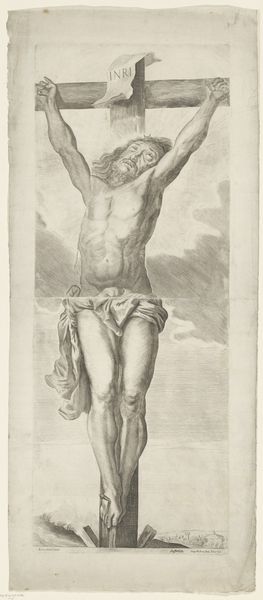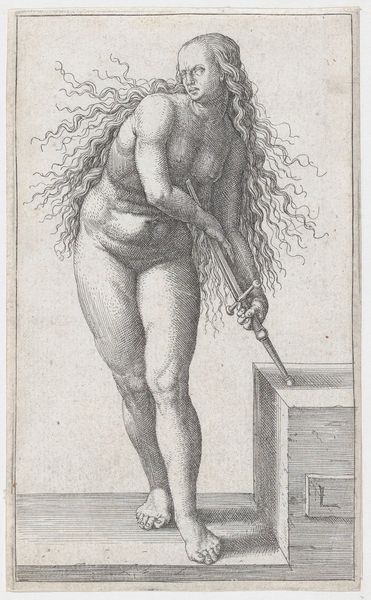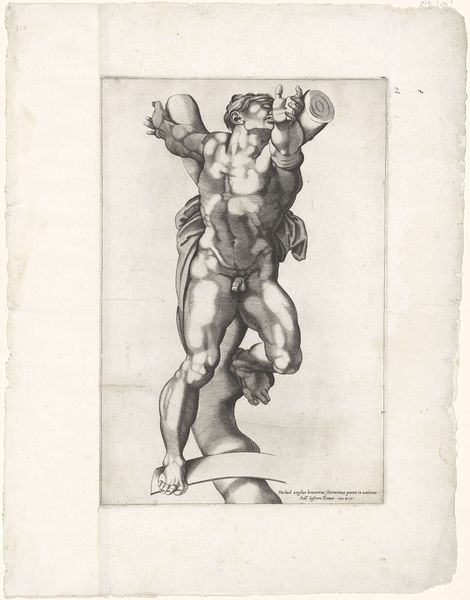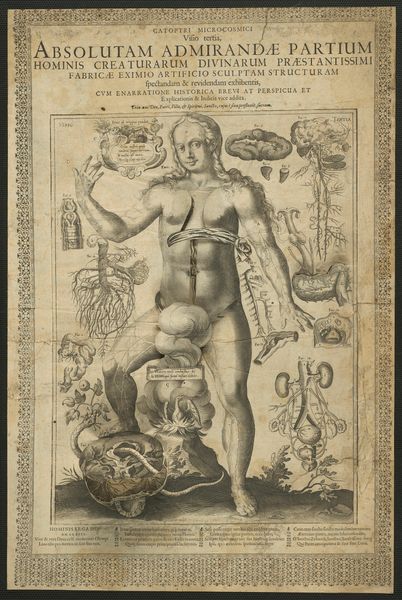
print, engraving
#
baroque
# print
#
figuration
#
line
#
history-painting
#
engraving
Dimensions: 444 mm (height) x 199 mm (width) (brutto)
Curator: What strikes me immediately about this print, simply titled *Christ on the Cross*, dating sometime between 1609 and 1672, is how it diverges from the typical devotional images circulated at the time. It presents such an explicit vision of agony. Editor: Yes, a visceral, embodied agony! There is an almost disturbing corporeality. See how the blood almost wells forth from the wounds, rendered with the same meticulous detail as Christ's musculature. Even the scroll above His head appears distressed, as if torn. Curator: That tension you identify plays into broader debates of the period, wherein sacred art had to function didactically but also provide, well, spiritual experience. Here we have the fusion of stark representation and Baroque aesthetics, aimed toward moving its viewers. What is intriguing here is that is part of the collection of the SMK - Statens Museum for Kunst in Copenhagen, in a time period when that entire area shifted to Protestantism. Editor: Exactly. Looking closer at the cherubs at the base and the accompanying inscriptions, there’s a blend of lament and adoration, key to how such an image would function in personal devotion. Consider how the symbol of the crucified Christ represents not just death but resurrection, offering hope amidst suffering. Notice how one of the cherubs wipes tears away from their eyes while another brandishes the instruments of Christ’s Passion – there is some form of vindication or even defiance there. Curator: I appreciate you focusing on the psychological complexity! It helps contextualize the visual elements with its purpose, because while images could carry didactic meaning they are always affected by those who interact with them. The use of engraving is particularly apt in this piece, echoing not only theological arguments in pamphlets but lending permanence to the artwork itself, and ensuring wider access and distribution during a volatile period. Editor: This work serves as a powerful meditation. I am still drawn back to the artist's intentional choices here: a brutal, yes beautiful Christ—but it reminds me that visual symbols tap deep wells of emotion and memory. Curator: It does show us how religious and political expression merged at a particularly conflicted period of European history and leaves me wanting to think about art and its purpose even today.
Comments
No comments
Be the first to comment and join the conversation on the ultimate creative platform.
